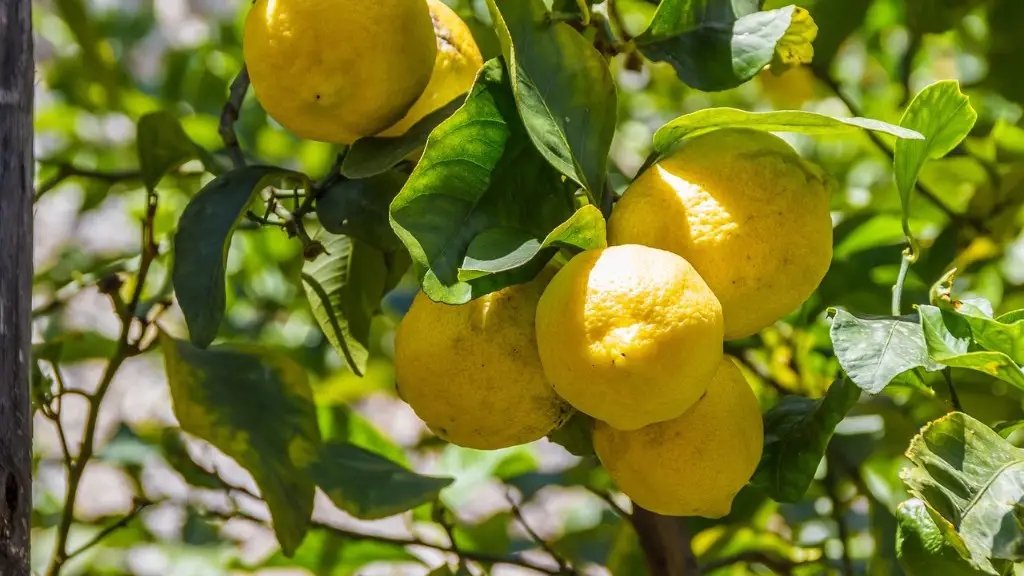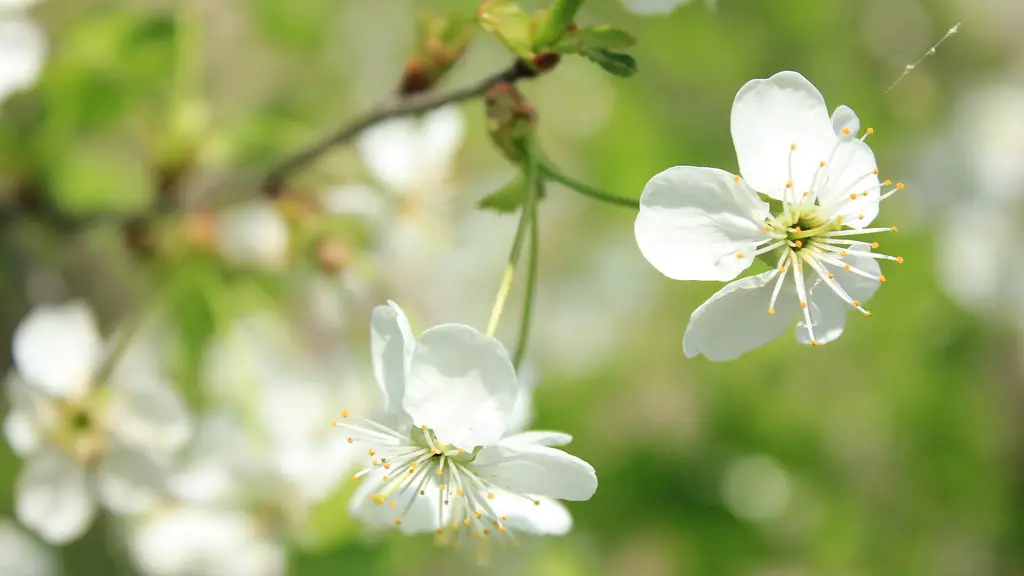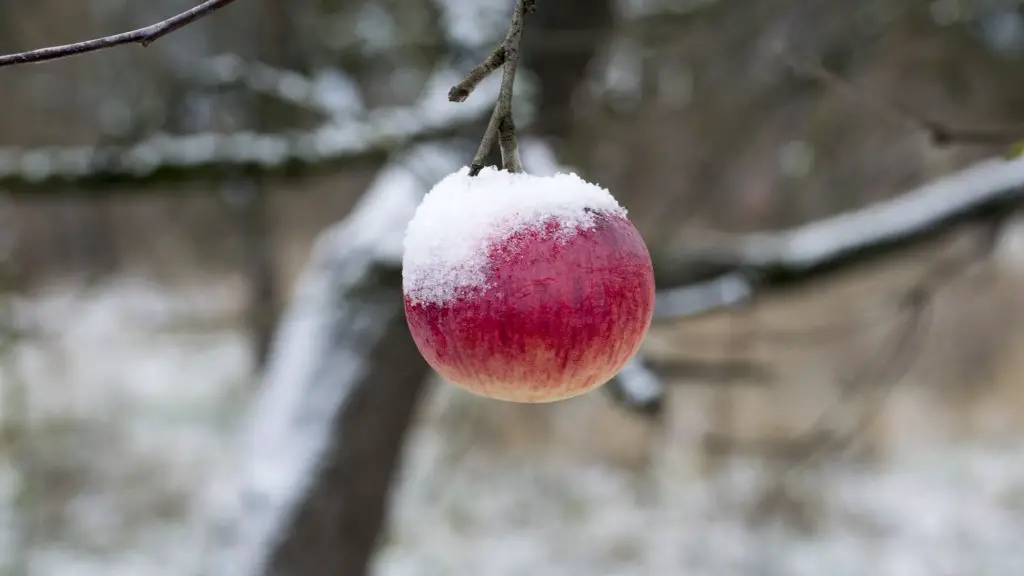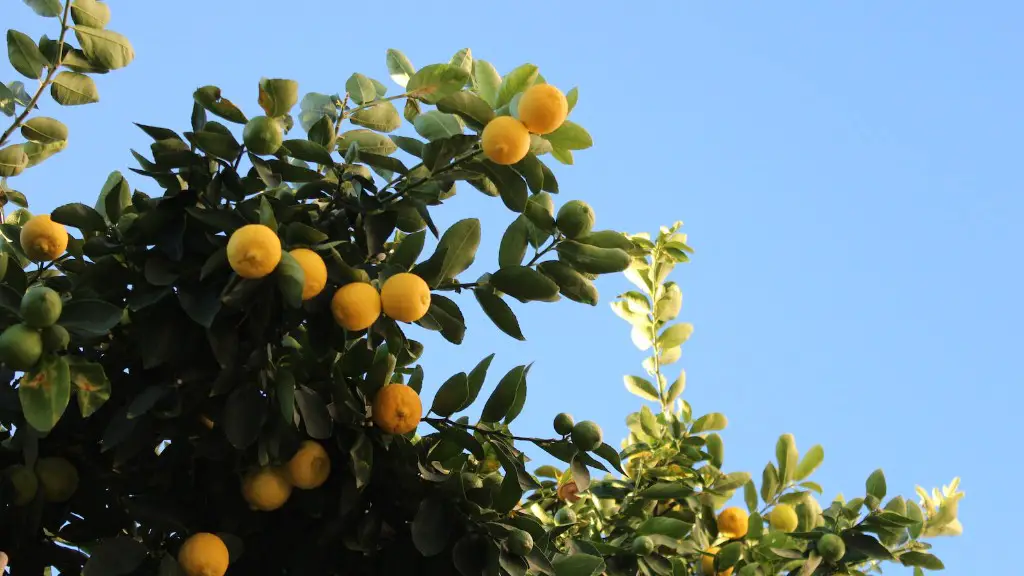Carbon Deficiency in Soil
A lack of carbon in the soil might be the leading cause of the failure of a potted palm tree. Carbon, an important part of the soil’s overall nutrient content, helps balance the chemistry of the soil and ensures that a sufficient amount of trace minerals, such as iron and magnesium, are present. Without the appropriate level of carbon in the soil, essential nutrients and trace minerals are not being absorbed by the tree, resulting in a lack of the plant’s ability to thrive.
According to experts, the amount of carbon in a soil is determined by organic matter that has been built up over years of accumulated carbon dioxide, which is a by-product of decomposing plants and animals. Unfortunately, plants that are grown in containers are generally devoid of organic matter since no natural sources of carbon are present in the surrounding environment. Thus, a lack of carbon can be a common problem with containerized palm trees.
In addition to the lack of carbon, a lack of nitrogen is also thought to be a contributing factor to a palm dying. Nitrogen is responsible for aiding a variety of metabolic processes within the palm tree; without it, the tree will be unable to receive the energy it needs to survive. While the amount of nitrogen in the soil is typically tested prior to plant growth, a decrease in nitrogen levels can often occur over time, which can lead to the eventual death of a potted palm.
Furthermore, many container gardens are known to have too much water in them, as the soil has difficulty draining when potted. As a result, this can cause a rapid build-up of salts and other minerals, as newly-added water carries these substances with it. If allowed to pool within the soil, this can cause a problem of waterlogging, leading to suffocation in the plant’s roots. The combination of these two factors of too much water and a lack of vital minerals can be lethal for a palm tree.
Diseases
Another potential cause for a dying palm tree is infection by a common fungal disease. Fungal diseases, such as Fusarium basal rot and brown rot, are often found in hot, dry climates, and can cause severe damage to the tree in a very short period of time. These diseases, if left untreated, can spread rapidly, leaving major portions of the palm tree dead or decaying. As these diseases need to be treated immediately, it is important to regularly inspect the palm tree for any signs of disease.
Along with external viruses and infections, a palm tree could also be dying due to a nutrient deficiency. Since palm trees generally need less nutrients than other types of trees, a deficiency in any of the primary macro or micronutrients can have serious consequences. If a palm tree is receiving too little nutrients, the leaves may begin to yellow, the growth of the tree may slow down, and in some cases, the stem can even become discolored. In extreme cases, if the deficiency continues, the tree may eventually die.
In order to diagnose the cause of a dying palm tree, it’s important for a homeowner to become as knowledgeable about palm planting and growing as possible. Researching the specific type of palm and its requirements for soil and water, in addition to recognizing any potential diseases or deficiencies, are all important aspects of maintaining a healthy palm tree.
Light Exposure
Light exposure is another factor that could lead to a deteriorating palm tree. While part-shade or full-sun areas are both suitable environments for most palms, variances in light levels should be monitored carefully. Too much sun can cause a palm tree to become yellowed, dried and wilted, while too little light could lead to slower, stunted growth. In both cases, it’s important to re-evaluate the amount of light received by the palm, as a drastic change in light can lead to death in a very short period of time.
Incorrect planting is also a potential cause of a palm’s death. If the tree was not planted in deep enough soil, or was not provided with enough fertilizer, it is likely that the tree may not be receiving the nutrients needed for a healthy, stable growth. The depth of the soil in which the tree was planted is especially important, as a palm tree may not be able to penetrate the soil deep enough to find a source of the necessary nutrients, leading to eventual death.
Furthermore, due to the care and attention needed by most palms, it is important to regularly inspect the tree for signs of pests and infection. If spotted quickly enough, these incidences can often be treated, ensuring that the palm will survive. Additionally, an excessive of wax build-up on the leaves, through either over-pruning or weather change, can lead to a decrease in the tree’s growth.
Changing Climate
Finally, the changing climate of an area can potentially cause the death of a palm tree. If the climate changes drastically from what the palm was previously accustomed to, the tree may become stressed and unable to adapt. The change in temperature, either too hot or too cold, or the introduction of drastic weather patterns, can unbalance the minerals in the soil or affect the tree’s ability to capture energy from the sun.
In order to prevent the death of a palm tree, it’s important to understand both the specific needs of the palm, and the environment in which the tree was planted. Further, any changes or deficiencies in carbon or nitrogen in the soil, as well as the presence of any diseases or pests should be monitored, and discrepancies quickly analyzed in order to rectify the problem. With this knowledge, homeowners will be able to properly care for their palms, ensuring a healthy and happy tree.
Unparalleled Adaptability
It’s amazing to think that palms, so unassuming in appearance, can adapt to almost any environment. From coastal regions to mountains, from hot deserts to frigid winter climates, palms are able to survive and even thrive in conditions that would mean certain death for other types of plants.
It is through their unparalleled adaptability that palms are able to survive in even the most extreme of conditions, shifting their genetic makeup in order to remain healthy and able to withstand the varying conditions in which they may find themselves. Thomas A. Molnia, a palaeoecologist at Pacific Northwest National Laboratory, states “The major theme of my studies over the past decade or so is that palms are perfectly adapted to their various habitats.” This remarkable ability has allowed palms to survive in forty-five percent of the world’s lowland areas, in a variety of differing climates.
For homeowners and gardeners, this adaptability can be taken advantage of. While many plants that require a great deal of attention may falter and die if given an environment that is too extreme, palms, through natural selection, are able to survive these conditions. As a result, care is not necessarily required to be taken in regards to the exact configuration of an area. As long as the proper preparation is taken (soil depth, for example), the palm will likely be able to thrive with minimal attention.
Soil and Water Conditions
Palms will often adjust their water and soil usage in order to accommodate and adapt to an environment. For example, in drier environments, palms are able to achieve a certain degree of drought resistance, enabled through their development of both lower moisture levels and peaty soils. During tense drought periods, some palms develop a hierarchical form, with each leaf ensuring the other will receive the necessary water, allowing the tree to continue to survive.
In wetter areas, an adaptation of aerenchyma enables palms to transport oxygen through their large, hollow root systems. This oxygen is essential for the tree’s roots to breathe, allowing the palm to survive in environments with high levels of water. In a study conducted in Western Australia, it was found that Nannorrhops ritchiana was able to survive for over a year in completely saturated soil.
Surprising Flexibility
In addition to the varying soil and humidity conditions that palms are able to adapt to, the species are also able to manage differing temperatures. Many palms can take extreme shifts in weather, with some species able to survive up to 120 degrees Fahrenheit and down to negative fifteen degrees Fahrenheit. This impressive number of adaptable climates makes many palms the perfect choice for many different geographical areas.
Going beyond the different soil and temperature requirements these plants can manage, some palms are able to survive even when in direct contact with saltwater. This ability, known as salinity resistance, can enable certain species of palms to be planted in beach or coastal areas without fear of harm, an ability which no other type of non-aquatic tree can boast.
Through this surprising flexibility, palms are able to survive in nearly any environment. From saltwater, to extreme temperatures, to soils which other plants wouldn’t even consider inhabiting, the species is remarkable for its ability to succeed in a wide variety of conditions. For people looking for a hardy tree species to not only survive, but thrive, in any location, a palm is an obvious and perfect choice.
Unique Characteristics
Along with its unprecedented ability to survive in nearly any type of environment, palms are also renowned for their special characteristics. From the fabled Coconut Palm, whose sweet pulpy fruit can be used to satisfy hunger and thirst, to the majestic Areca palm, whose fine fronds make an attractive addition to any home, there is a wide variety of species that are perfect for any desired end result.
Many palms are also known for their oil-producing capabilities, with some species such as the Date Palm supplying up to 100 liters of oil a year from fruit alone. Others, such as the Ele



